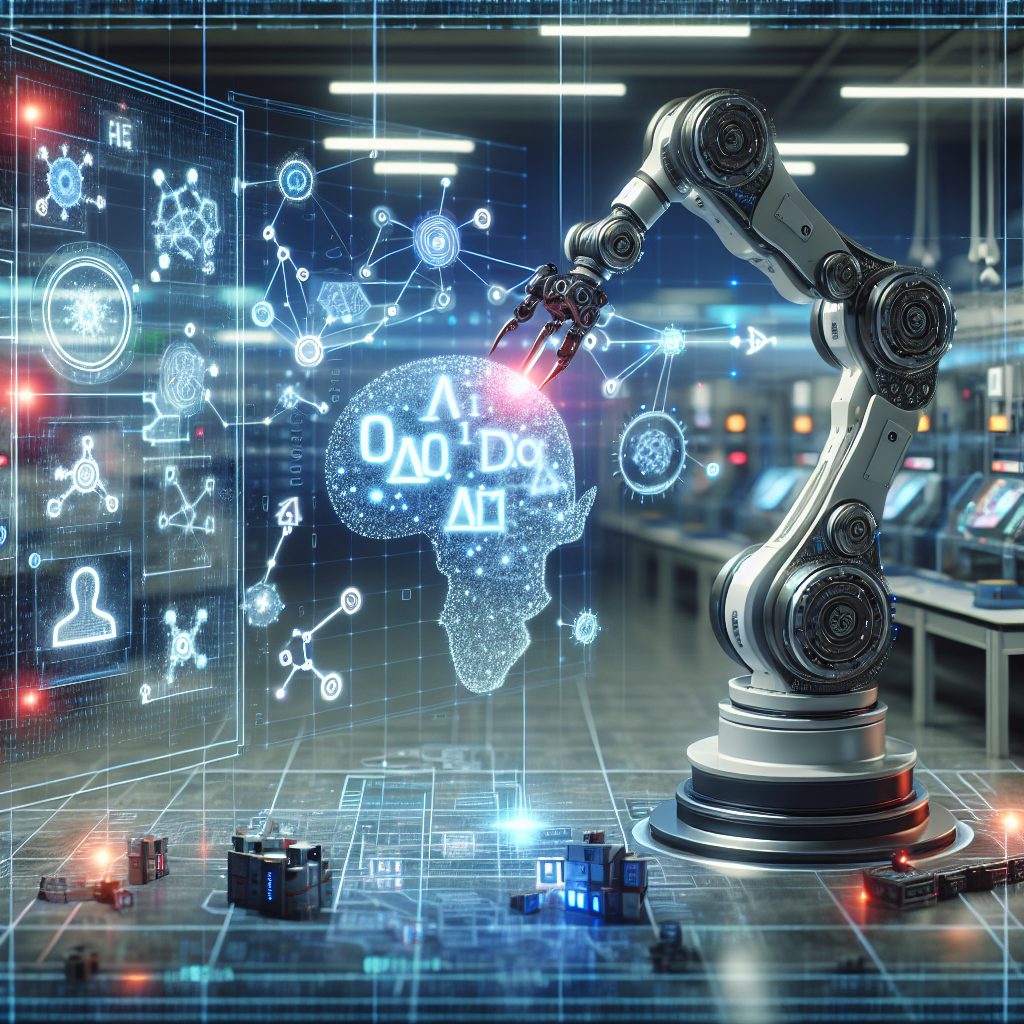Generative AI and Robotics: Advancements in AI-driven Automation
Advancements in artificial intelligence (AI) have revolutionized the field of robotics, enabling the development of more intelligent and autonomous machines. Generative AI, in particular, has played a key role in driving this innovation by allowing robots to learn and adapt to their environment in real-time. This article will explore the latest advancements in generative AI-driven automation and its implications for the future of robotics.
What is Generative AI?
Generative AI is a subset of artificial intelligence that focuses on creating new data or content rather than just analyzing existing data. This is achieved through the use of algorithms that are trained to generate new information based on patterns and examples from a dataset. Generative AI has been used in a wide range of applications, from creating realistic images and videos to generating text and music.
In the context of robotics, generative AI enables machines to learn from their surroundings and make decisions based on their observations. This allows robots to adapt to changing environments, learn new tasks, and interact with humans more effectively. By combining generative AI with other advanced technologies such as machine learning and computer vision, researchers are able to create robots that are more intelligent, versatile, and capable of performing complex tasks.
Advancements in Generative AI-driven Automation
One of the key advancements in generative AI-driven automation is the development of self-learning robots. These robots are equipped with advanced sensors and algorithms that allow them to learn from their interactions with the world around them. By continuously analyzing and adjusting their behavior based on feedback, self-learning robots can improve their performance over time and adapt to new tasks and environments.
Another important advancement is the use of generative adversarial networks (GANs) in robotics. GANs are a type of generative AI algorithm that consists of two neural networks – a generator and a discriminator – that are trained together to generate new data. In the context of robotics, GANs can be used to create realistic simulations of different environments, allowing robots to train and test their skills in a virtual setting before deploying them in the real world.
Furthermore, generative AI-driven automation has enabled the development of collaborative robots, or cobots, that can work alongside humans in a wide range of settings. These robots are designed to be safe, flexible, and easy to program, making them ideal for tasks that require close collaboration between humans and machines. By using generative AI algorithms to analyze and respond to human behavior, cobots can adapt their actions to work more effectively with their human counterparts.
Implications for the Future of Robotics
The advancements in generative AI-driven automation have significant implications for the future of robotics. As robots become more intelligent and autonomous, they will be able to perform a wider range of tasks with greater efficiency and accuracy. This will lead to increased productivity, reduced costs, and improved safety in industries such as manufacturing, healthcare, and transportation.
Generative AI-driven automation also has the potential to revolutionize the way we interact with robots. By enabling machines to learn and adapt in real-time, we can create robots that are more responsive, intuitive, and capable of understanding human emotions and intentions. This opens up new possibilities for human-robot collaboration and communication, leading to more natural and efficient interactions between humans and machines.
FAQs
Q: Can generative AI-driven automation replace human workers?
A: While generative AI-driven automation has the potential to automate a wide range of tasks, it is unlikely to completely replace human workers. Instead, it is more likely to augment human capabilities and enable humans to focus on more complex and creative tasks.
Q: How secure is generative AI-driven automation?
A: Like any technology, generative AI-driven automation comes with security risks that need to be addressed. It is important to implement robust cybersecurity measures to protect against potential threats such as data breaches, hacking, and malicious attacks.
Q: What are the ethical implications of generative AI-driven automation?
A: The use of generative AI-driven automation raises important ethical questions around issues such as privacy, bias, and accountability. It is essential for researchers, developers, and policymakers to consider these ethical implications and ensure that AI technologies are deployed responsibly and ethically.
In conclusion, generative AI-driven automation is transforming the field of robotics by enabling machines to learn, adapt, and interact with their environment in new and innovative ways. With continued advancements in AI technology, we can expect to see robots that are more intelligent, autonomous, and capable of performing a wide range of tasks with greater efficiency and precision. As we navigate this new era of AI-driven automation, it is important to consider the ethical, security, and societal implications of these technologies to ensure that they are used responsibly and for the benefit of all.

